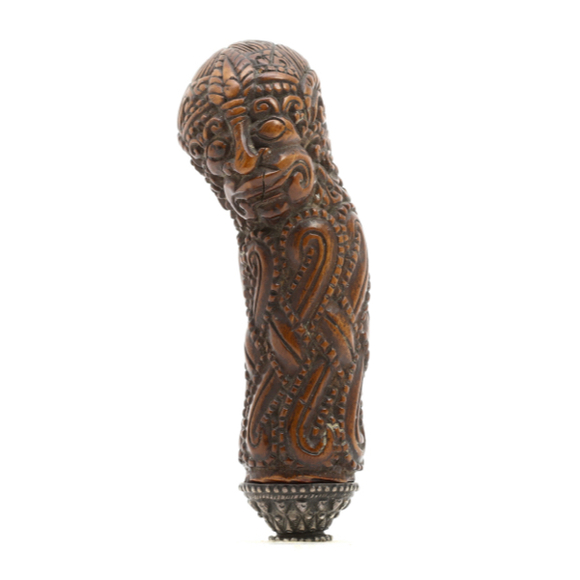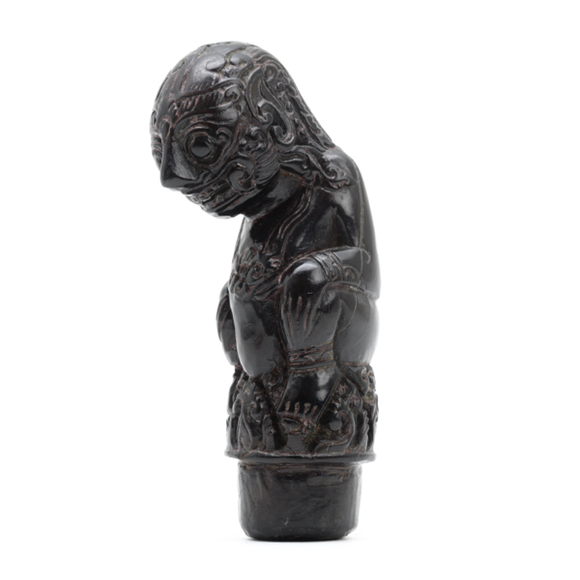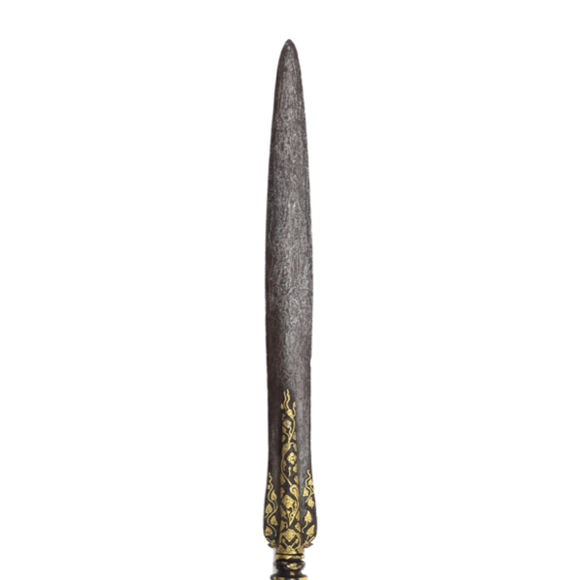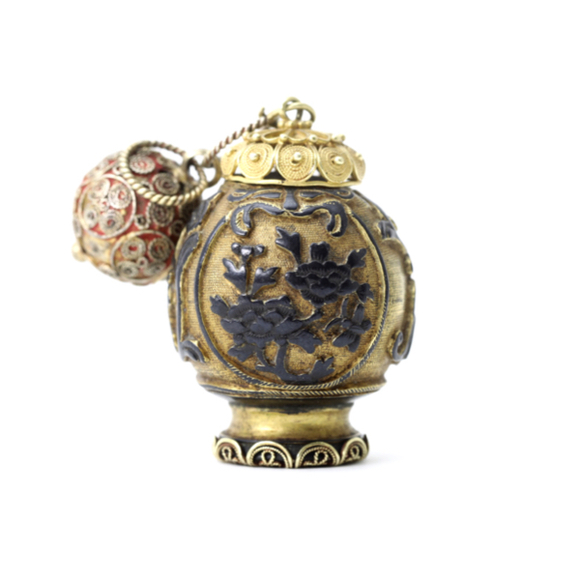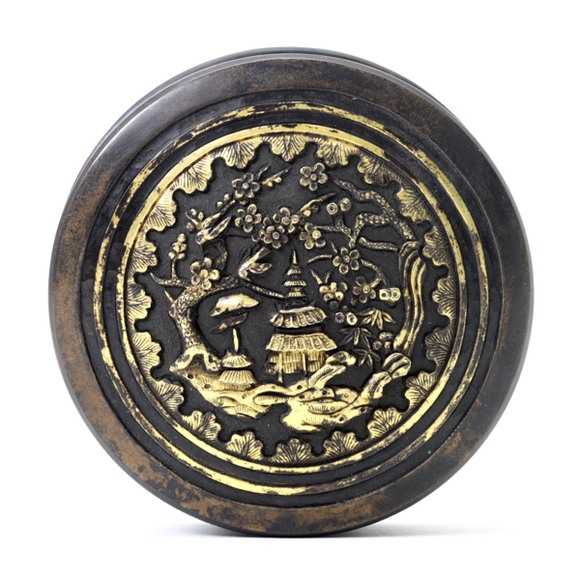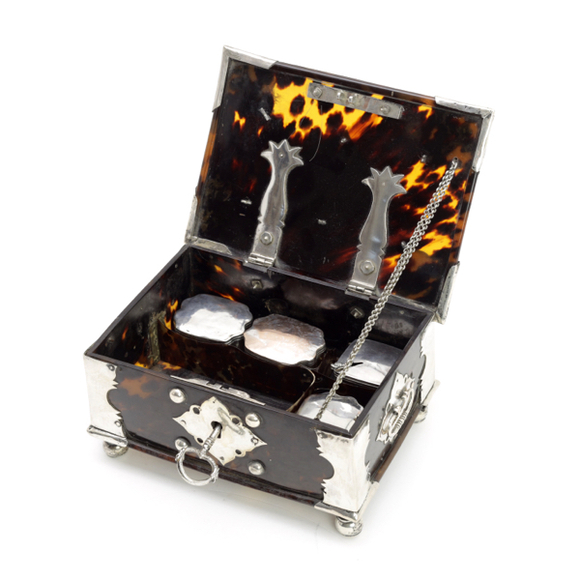19th century, probably originating from Cirebon.

72.5 cm
59.6 cm
Base 6 mm
Middle 2.5 mm
5 xm from tip 1 mm
Base 33 mm
Middle 26 mm
5 xm from tip 22 mm
369 grams
9.5 cm from hilt
Iron, steel, wood, brass
Probably Java, Indonesia
Blade, Dutch
Late 18th to early 19th century
From a Dutch private collection
Description
A highly unusual sword. The blade is an old Dutch V.O.C. "houwer" blade, a short curved saber. It has partially faded marks that those in the know will instantly recognize as marks of the VOC, Amsterdam chapter. The remains of the date seem to incorporate two sevens. It is most likely 1774.
The hilt is highly unusual and has so far eluded classification. It is made of a light brown hardwood, with a smooth, slightly sunken grip section. The pommel consists of a feline creature, sitting on a plateau with a ball between its front paws. The stripes are typical for Asian representations of the tiger. It has a small brass S-shaped guard and brass ferrule with two grooves.
The sword comes with a perfectly fitting all-metal scabbard that is old, but certainly is a lot younger than the rest of the sword. Tip of scabbard is broken.

Attribution
The smallish guard resembles guards on some Filipino and Javanese arms. The slightly L-shaped profile of the hilt reminds of swords of the Baduy people, an indigenous Bantenese community that shuns foreign influence and has to this day kept to their ancient traditional ways. The identify themselves as Orang Kanekes or "the people of Kanekes".

A rare depiction of a Badoei sword, sheathed at 4. and unsheathed at 4.a.
From Internationales Archiv für Ethnographie, Internationales Gesellschaft für Ethnographie; Rijksmuseum van Oudheden te Leiden.
Heft IV. 1891. Plate XIII.

A rare Baduy sword with carved hilt. Private collection.
Photo by Maurice Bloebaum.
If it is a Baduy sword, it is one of very few such swords in existence and possibly one of the more elaborate ones.
However, the jury is still out. If you have any information regarding this unusual sword, please get in touch.

















Sawasa is metalware in black and gold made primarily for the Dutch expat community in Asia.

